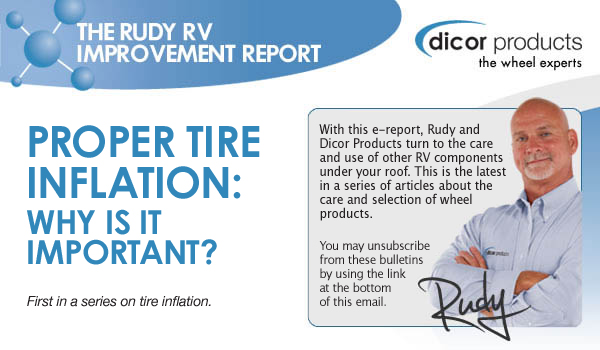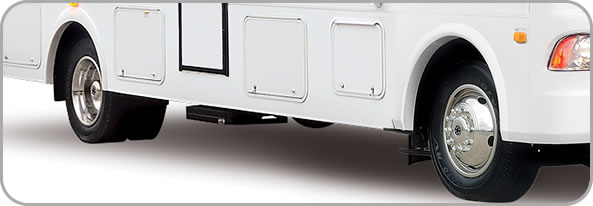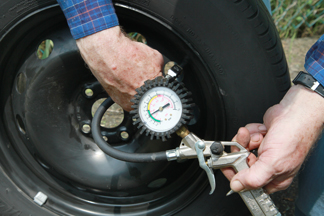
 As you head out to enjoy the July 4 holiday and more, you might think about your RV tires. Now would be a good time to consider how proper tire inflation is important for your safety and for achieving the best handling, fuel economy and longevity from your tires. We say NOW is a good time because this is an area where many RVers tend to be lax. In my next two RV reports, we’ll take a look at first, why this is nothing to be lax about and, second, the procedures and best practices for maintaining proper inflation, including keeping your RV from getting overloaded.
As you head out to enjoy the July 4 holiday and more, you might think about your RV tires. Now would be a good time to consider how proper tire inflation is important for your safety and for achieving the best handling, fuel economy and longevity from your tires. We say NOW is a good time because this is an area where many RVers tend to be lax. In my next two RV reports, we’ll take a look at first, why this is nothing to be lax about and, second, the procedures and best practices for maintaining proper inflation, including keeping your RV from getting overloaded.
Underinflation: Radial tires don’t look low!
Some RVers seldom check their tires. Unless the tire actually looks like it’s low they may not want to bother with it, especially if that means also fumbling with the inner tire pressure check on a dual wheel axle. But modern radial tires do not look low when they are underinflated. You can really only tell by checking the pressure.

Some drivers may actually feel OK with a bit of underinflation, feeling like it provides a softer ride. This it may do, but at a price. Here are the main negative consequences of underinflation:
• Underinflated tires will tend to ride on their edges rather than their center, which will actually flex in a bit and lose solid contact with the road. This can yield less traction and, for example, make hydroplaning more likely as water is better able to get in between the tire and the pavement and cause a temporary loss of control.• Underinflation also causes excessive tread wear on the inner and outer edges, reducing the tire’s tread life.
• Underinflation creates more “rolling resistance,” making the engine work harder to keep moving and reducing gas mileage.
• Rolling resistance with all the weight distributed to the edges also results in poorer handling, which can not only make driving more of a chore but also makes it harder to avoid potentially dangerous traffic situations.
• Longer braking time is also required with under-inflated tires because the center is not gripping the road well.
Overinflation: Opposite but the same!
You can look at overinflation as the opposite problem but with similar results. Again, the main result is an uneven distribution of weight across the entire tread base of the tire.
• Braking is also not as good because of this loss of “road grip.”
• Wear on the center treads is excessive, again more quickly reducing the tire’s lifecycle.
• Overinflated tires can’t absorb the bumps in the road as well as properly inflated tires, and results in a bumpier ride. The harder sidewall also transfers more noise to the interior of the RV.
• The overly pressurized tire becomes more vulnerable to a blow-out from a bumpy pressure spike or from excessive heat buildup up that places extra stress on the sidewalls.
In addition, both underinflated and overinflated tires make failure from an overloaded RV more likely. It’s a given that most tires will lose a certain amount of pressure over time, so underinflation becomes the default mode unless you stay on top of it. Overall, along with safety issues, over and underinflated tires can put an unnecessary hurt on your pocketbook with on-the-road breakdowns, poorer gas mileage and sooner-than-necessary tire replacements.
The key to avoiding such problems is maintaining optimal inflation to keep the most rubber firmly on the road by knowing and adhering to the proper pressure and through regular and frequent pressure checks, which we will discuss in our next report. Have a good holiday!
Next: How to take care of your tires.